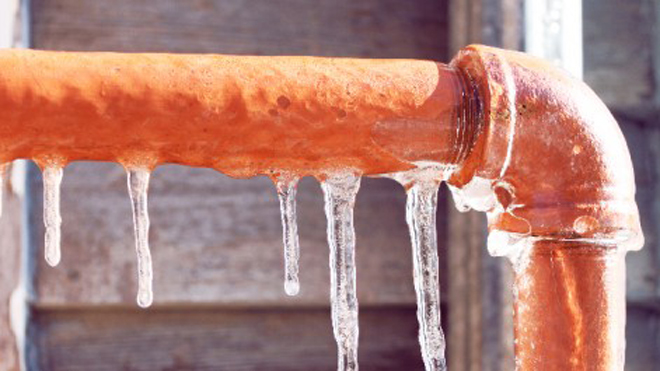How to Defend Your Pipes from Freezing: Specialist Advice
How to Defend Your Pipes from Freezing: Specialist Advice
Blog Article
How do you really feel about Helpful Tips to Prevent Frozen Pipes this Winter?

Cold weather can damage your pipes, particularly by freezing pipes. Here's exactly how to avoid it from taking place and what to do if it does.
Intro
As temperature levels drop, the risk of frozen pipes increases, potentially leading to costly repairs and water damage. Understanding just how to stop icy pipes is essential for property owners in cool environments.
Avoidance Tips
Insulating vulnerable pipelines
Wrap pipes in insulation sleeves or utilize warm tape to safeguard them from freezing temperatures. Focus on pipes in unheated or exterior locations of the home.
Home heating methods
Keep interior spaces sufficiently heated up, especially locations with pipes. Open closet doors to enable cozy air to distribute around pipes under sinks.
Just how to determine icy pipes
Seek reduced water circulation from faucets, uncommon smells or noises from pipelines, and visible frost on subjected pipelines.
Long-Term Solutions
Structural modifications
Take into consideration rerouting pipes away from exterior walls or unheated locations. Include additional insulation to attic rooms, basements, and crawl spaces.
Upgrading insulation
Invest in premium insulation for pipes, attics, and walls. Correct insulation aids preserve constant temperatures and decreases the risk of icy pipelines.
Securing Outside Plumbing
Yard hose pipes and outdoor taps
Disconnect and drain pipes garden hoses prior to winter. Install frost-proof spigots or cover outside faucets with insulated caps.
Recognizing Frozen Pipelines
What triggers pipelines to freeze?
Pipelines freeze when exposed to temperatures below 32 ° F (0 ° C) for prolonged durations. As water inside the pipelines ices up, it expands, taxing the pipeline walls and potentially causing them to burst.
Dangers and problems
Frozen pipelines can result in water supply disruptions, residential or commercial property damage, and costly repair services. Ruptured pipelines can flood homes and trigger substantial structural damage.
Signs of Frozen Pipes
Identifying icy pipelines early can avoid them from bursting.
What to Do If Your Pipelines Freeze
Immediate activities to take
If you think frozen pipelines, keep taps open up to ease pressure as the ice thaws. Utilize a hairdryer or towels soaked in warm water to thaw pipes gradually.
Conclusion
Protecting against frozen pipelines requires positive steps and fast responses. By comprehending the reasons, signs, and preventive measures, homeowners can secure their pipes during cold weather.
5 Ways to Prevent Frozen Pipes
Drain Outdoor Faucets and Disconnect Hoses
First, close the shut-off valve that controls the flow of water in the pipe to your outdoor faucet. Then, head outside to disconnect and drain your hose and open the outdoor faucet to allow the water to completely drain out of the line. Turn off the faucet when done. Finally, head back to the shut-off valve and drain the remaining water inside the pipe into a bucket or container. Additionally, if you have a home irrigation system, you should consider hiring an expert to clear the system of water each year.
Insulate Pipes
One of the best and most cost-effective methods for preventing frozen water pipes is to wrap your pipes with insulation. This is especially important for areas in your home that aren’t exposed to heat, such as an attic. We suggest using foam sleeves, which can typically be found at your local hardware store.
Keep Heat Running at 65
Your pipes are located inside your walls, and the temperature there is much colder than the rest of the house. To prevent your pipes from freezing, The Insurance Information Institute suggests that you keep your home heated to at least 65 degrees, even when traveling. You may want to invest in smart devices that can keep an eye on the temperature in your home while you’re away.
Leave Water Dripping
Moving water — even a small trickle — can prevent ice from forming inside your pipes. When freezing temps are imminent, start a drip of water from all faucets that serve exposed pipes. Leaving a few faucets running will also help relieve pressure inside the pipes and help prevent a rupture if the water inside freezes.
Open Cupboard Doors
Warm your kitchen and bathroom pipes by opening cupboards and vanities. You should also leave your interior doors ajar to help warm air circulate evenly throughout your home.

I recently found that review on How to Prevent Your Pipes From Freezing when perusing the web. Don't hesitate to take the time to distribute this blog if you liked it. Bless you for being here. Return soon.
Visit The Following Page Report this page